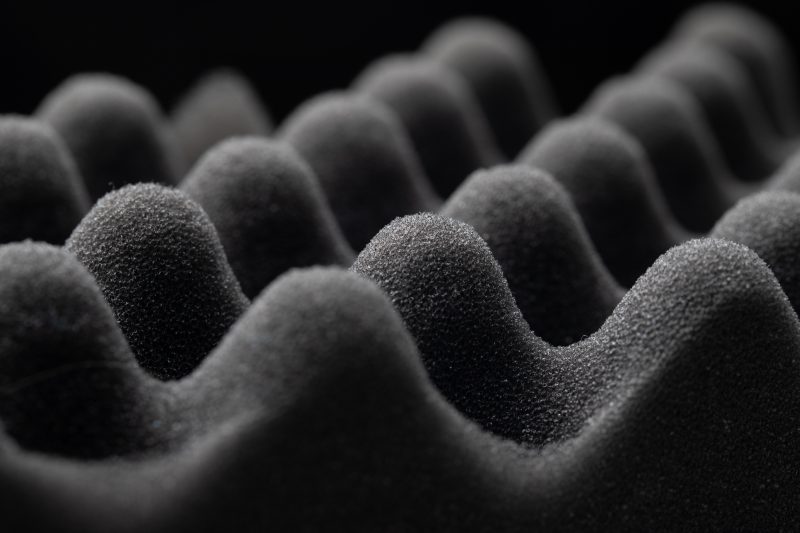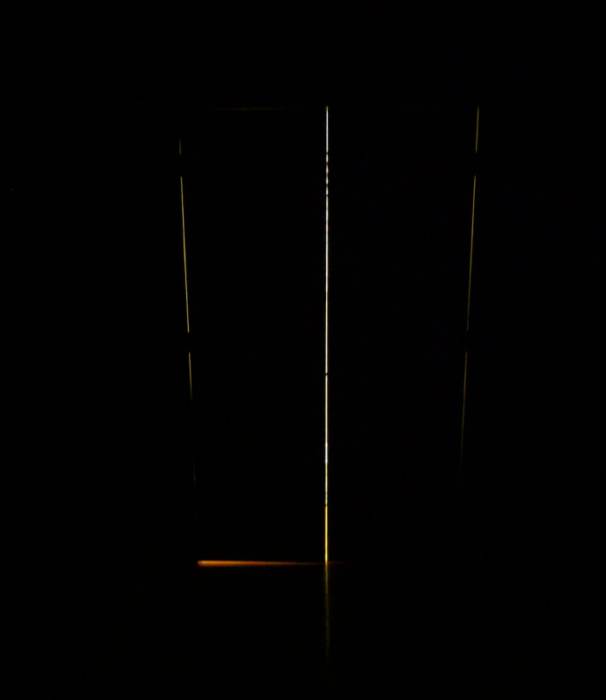No products in the cart.
Myths about Sound Blocking

16
Oct
5 Sound Blocking & Sound Dampening Myths
When it comes to soundproofing your apartment, there are a lot of misconceptions and myths out in the industry. Whether it’s using acoustic sound panels (effective for echo in restaurants, but not soundproofing a home) or other acoustic products, it’s important to understand what types of acoustic solutions will help your noise issue and which won’t work for your space. See our most commonly-encountered sound blocking myths below.
Myth #1: Sound Absorption Products Will Block Sound from Traveling Between Spaces
and Help with Sound Dampening
Truth: Acoustic panels absorb echo and reverberation, but they will not stop sound from traveling between spaces. Similarly, they will not help with sound dampening, which is the reduction of vibrational noise, or structure borne sound, through a wall.

Fiberglass and foam acoustic panels are not the ideal solution for sound blocking or sound dampening. Acoustic panels should only be used to absorb excess echo in a space, but cannot be used on a wall to stop sound transfer through that wall.
Acoustic panels are made out of fiber glass and have an NRC, or noise reduction coefficient, which let’s you know how well that fiber glass reduces reverberation.
Even though they don’t help reduce the volume in your space, a lot of companies will still advertise acoustic panels as a cheap solution for preventing sound from traveling between spaces. Thick fabrics also won’t help to block noise between spaces no matter how thick they are. As long as the fabric is porous at all, sound will be able to get through.
What will work? Try to look for sound blocking products that are STC rated (rated for sound blocking ability). These products will be dense and a good rule of thumb is that light and air will not be able to escape through the product or its installation. When installed in walls, sound blocking and sound dampening products such as mass loaded vinyl, will act as a shock absorber for sound and vibrations, reducing the amount of it transferring through the wall.
Myth #2: Hanging a blanket over my window will reduce noise coming through
Truth: I know this from experience, since I tried it myself. Regardless of the thickness, blankets aren’t meant to reduce noise coming through windows and doors. Whether cotton, nylon, polyester, or down, blanket fabric is porous and light compared to true sound blocking materials. Also, they don’t create a firm seal against the wall so sound will leak out from the gaps between the wall and the blanket.
The same is true of sound dampening curtains. As mentioned, if it does not carry a STC, the product will not “dampen” the volume from entering your room. This is among the most common sound blocking myths.
For more info, check out our in-depth guide on the use of soundproofing blankets.
Myth #3: One product will resolve all of my acoustic issues
Truth: Few people have only one noise problem in their home. Loud upstairs neighbors create structure-borne vibrations, while cars zipping by outside generate airborne sound waves. Frequency, amplitude, the type of medium, and distance are all different variables that determine how uncomfortable the sound becomes. The key is to focus on your greatest issue. If you have creaky floors, try Green Glue. For sound echoes that make it difficult to have a conversation, try hanging some baffles or absorption foam. If the issue is noise creeping in through your windows and doors, then consider using a soundproof curtain or soundproofing door panel to provide improvement in sound attenuation.
Myth #4: Adding mass automatically improves sound blocking of your doors and windows

Myth: Adding panels on a door will improve its soundproofing. To soundproof doors, you need to plug gaps to minimize flanking.
Truth: This is the biggest rule in sound-proofing, but is often misconstrued. It is all about where the mass is added. You have to find and seal the cracks where the sound is seeping in first (this is known as the “Flanking Path”). If those are taken care of, you can then add mass in the areas where the most sound is penetrating existing barriers. If you have a few double-pane windows in your room, you need to only hang a heavy, sound-proofing curtain over those that are older, standard windows, or the ones that face the highway.
When given direction about how to sound-proof the usual home, it is not resonance and acoustic tuning that is most critical. Instead, many people want to simply reduce the noise coming in through loud windows or noisy neighbors. Combat the myths about soundproofing out there, and share your experiences.
Myth #5: Adding More Layers of Dry Wall Will Help Block Noise
Truth: Multiple layers of dry wall will actually help sound travel further because noise travels further through solid material. Structure borne noise travels easily through the dry wall and then through the studs until it ultimately reaches the other side of the wall.
A common method people try is adding more layers of dry wall. A much better solution here is to use Wall Blokker Pro, our special mass loaded vinyl, and put it between your layer of dry wall and the studs on the other side. It’s a more affordable option and it’s much more effective. This prevents solid material from meeting more solid material when the dry wall is in direct contact with the studs.
Soundproofing Myths Revealed:
With so much misinformation on the web, especially as it pertains to soundproofing and acoustic issues, you need to be on the lookout for key misconceptions. Remember to analyze before purchasing and installing new products and solutions that might not address your noise issue.
Summary

Article Name
Myths about Sound Blocking
Description
There are many myths related to sound blocking. Here are the most common we come across. Remember to avoid these mistakes when soundproofing your home.
Author
Walker Peek
Publisher Name
Residential Acoustics
Publisher Logo


Great comments. I tried hanging a blanket over my window as well, and it was completely useless. Thanks for the heads up and the great blog.